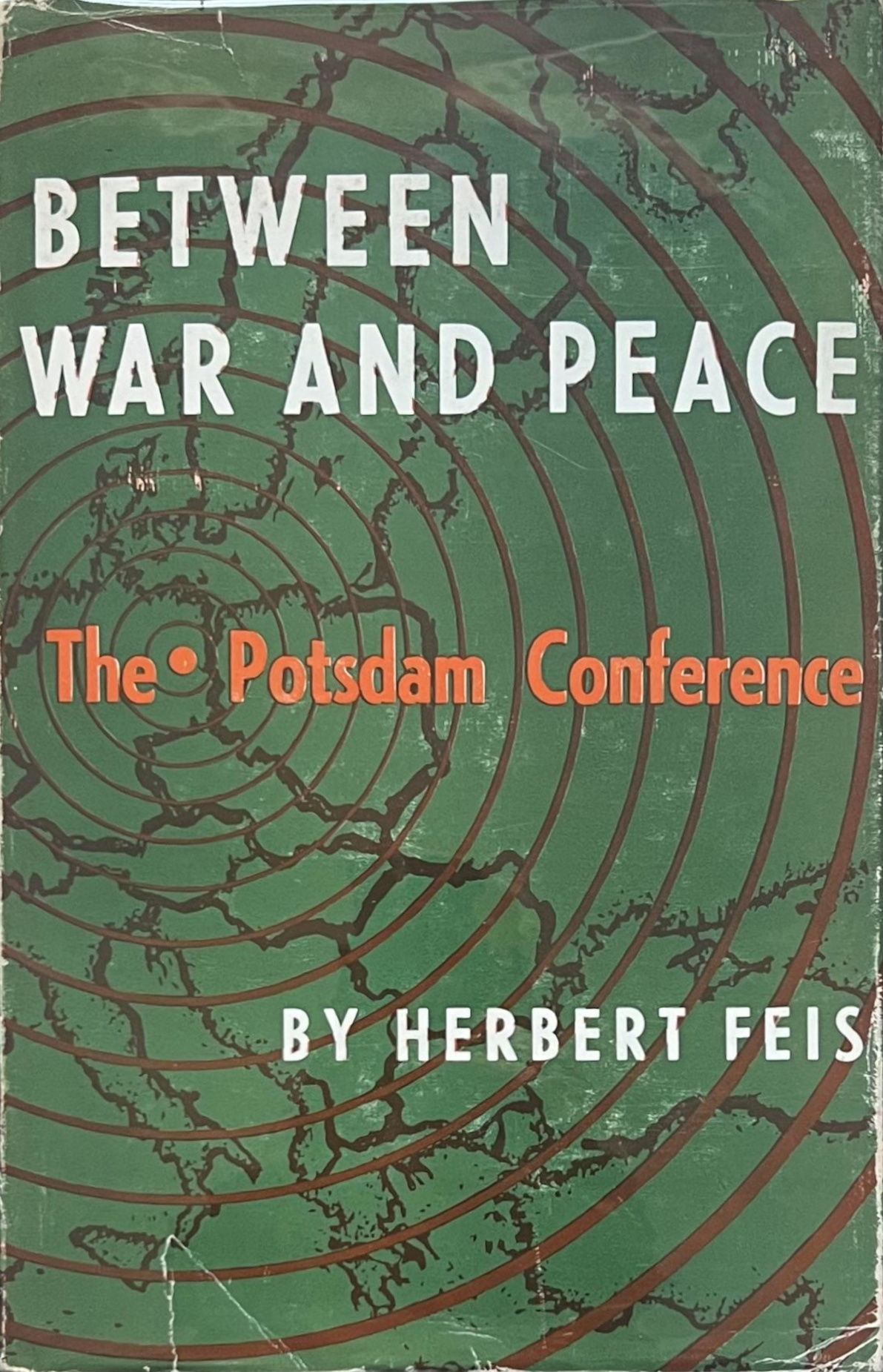Hardcover, 375 pages
English language
Published 1960 by Princeton University Press.

Hardcover, 375 pages
English language
Published 1960 by Princeton University Press.
As the armies of the United States, Great Britain, and Soviet Russia at last rolled over Germany in May of 1945, the peoples of the victorious countries rejoiced; but already the seams in the great coalition, no longer cemented by the exigencies of war, were beginning to rip.
In this book, Mr. Feis depicts the time of triumph, then traces the complex web of negotiation preceding the Potsdam conference so that the reader comes to the conference itself with a full understanding of the issues and personalities involved. One sees the quarrel over Poland and difficulties with Tito over Trieste, the arrival of a new American president, still uncomfortable in office but determined to get facts on the table and issues settled quickly, the influence of a new British prime minister suddenly replacing the masterful Churchill in mid-negotiations, and always the implacable, suspicious Stalin.
Mr. Feis then gives an account …
As the armies of the United States, Great Britain, and Soviet Russia at last rolled over Germany in May of 1945, the peoples of the victorious countries rejoiced; but already the seams in the great coalition, no longer cemented by the exigencies of war, were beginning to rip.
In this book, Mr. Feis depicts the time of triumph, then traces the complex web of negotiation preceding the Potsdam conference so that the reader comes to the conference itself with a full understanding of the issues and personalities involved. One sees the quarrel over Poland and difficulties with Tito over Trieste, the arrival of a new American president, still uncomfortable in office but determined to get facts on the table and issues settled quickly, the influence of a new British prime minister suddenly replacing the masterful Churchill in mid-negotiations, and always the implacable, suspicious Stalin.
Mr. Feis then gives an account of the conference which is likely to remain the standard reference both for factual content and for its depiction of the event. He has used all the published memoirs of the chiefs of state, military leaders, and diplomats, as well as eye-witness reports and papers of the State and War Departments, the Harriman papers and other manuscript sources.
If the seeds of the future are in the settlements of the past, this book will be recognized as essential for the under-standing of postwar history.